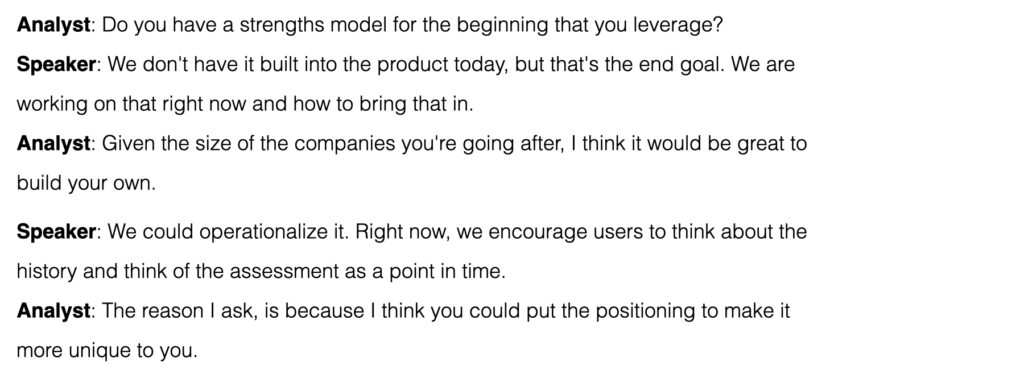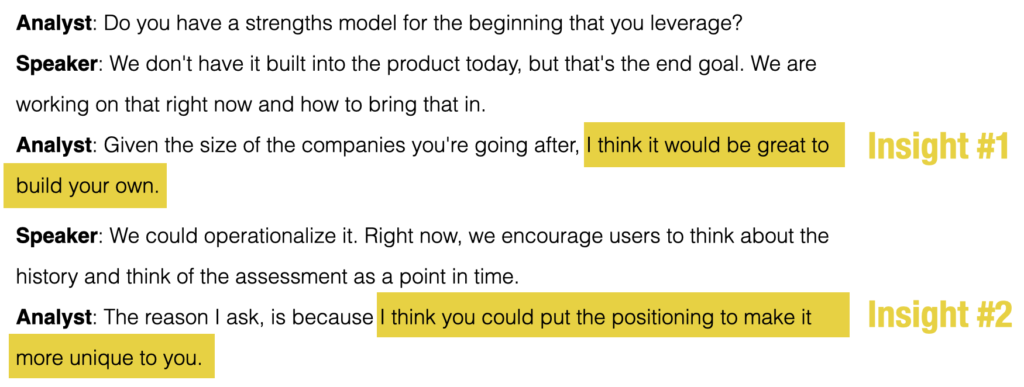by Christina Neill
May 27, 2020

During briefings and inquiries, while reading research, and while talking to analysts, AR pros have a front-row seat to the wealth of knowledge industry analysts share. It’s safe to say that no one else in your organization hears as much feedback, competitive intel, and research updates as you.
All too often, we hear from AR pros that they absorb and internalize what they learn from analysts but struggle with documenting these learnings in ways that can be used and shared later. Luckily, we’ve experimented and succeeded with an insights-based method that can alleviate this problem.
In a typical analyst interaction, it’s likely you take notes on what is being said during the conversation. These notes often are lengthy and full of back-and-forth commentary. After the interaction, you may reference them to send a debrief email to your speakers and stakeholders, but after that… you rarely look at them again.

Unfortunately, this means the feedback, intel, and learnings from this call don’t live on much longer than the interaction. Taking notes only allows you to see what an analyst said in that single interaction.
Instead of note-taking, we propose that a more impactful and sustainable method is to capture insights. Capturing insights is similar to note-taking, but is a more targeted method of capturing important information. Capturing insights allows for:
Insights are analyst feedback on your business, insight into your competition, and observations on your market, customers, and/or prospects captured during an interaction or via published research. In short, an insight is a single important verbatim piece of analyst commentary.

We believe there are four types of analyst insights:
Once you start writing insights instead of notes, over time you’ll be able to create a library of learnings that you can use to inform your AR strategy. You’ll be able to see:
Plus, capturing insights are an easy way to quickly answer everyday questions like:
Insights are everywhere – you just have to cull them from the work you are already doing. In our next webinar, we’re going to dive deep into what insights are, how to find them, and what to do once you have.
Join us on June 17 for the first webinar in our “Insights-Driven AR” summer content series to learn more about how to find and use insights to drive your AR program.